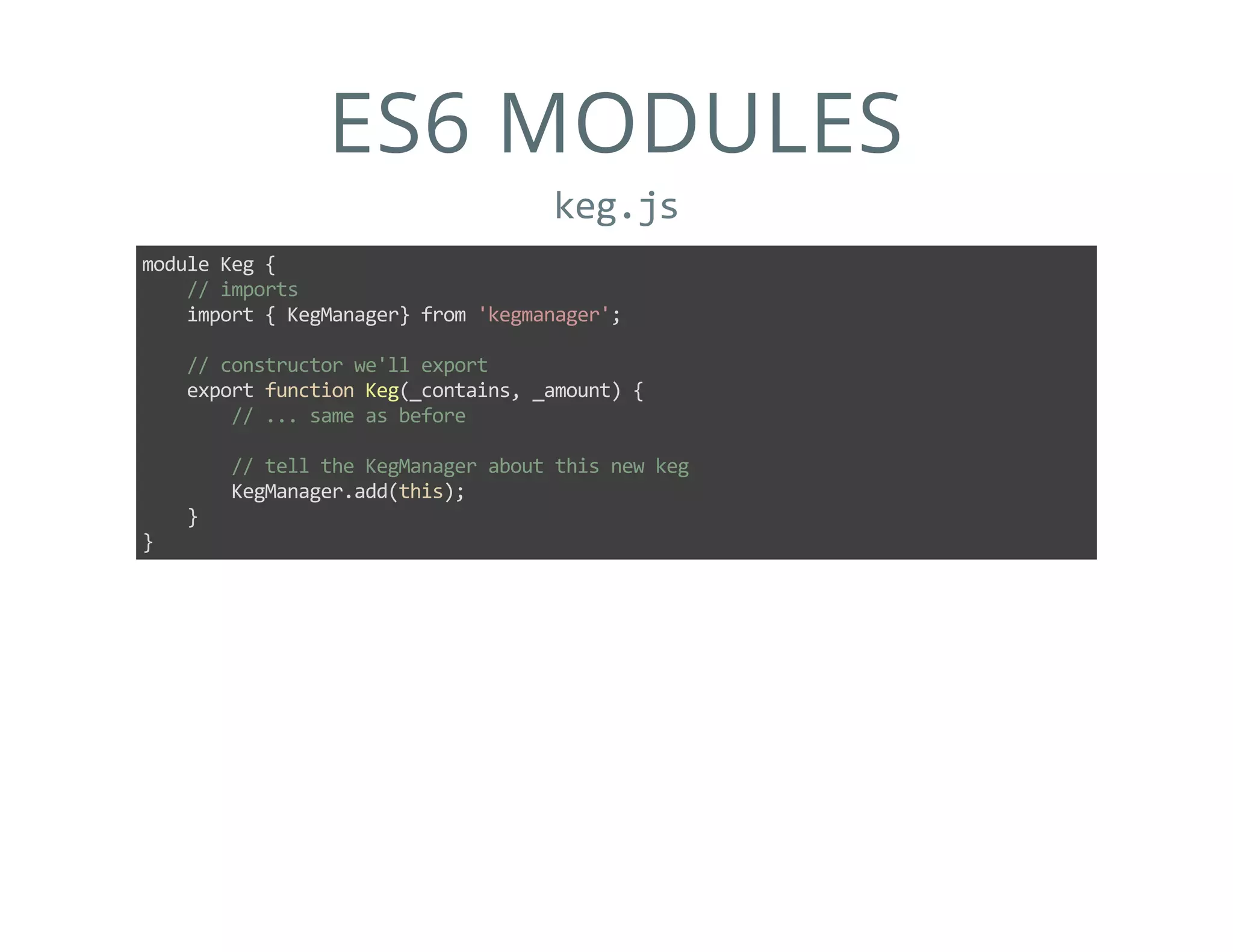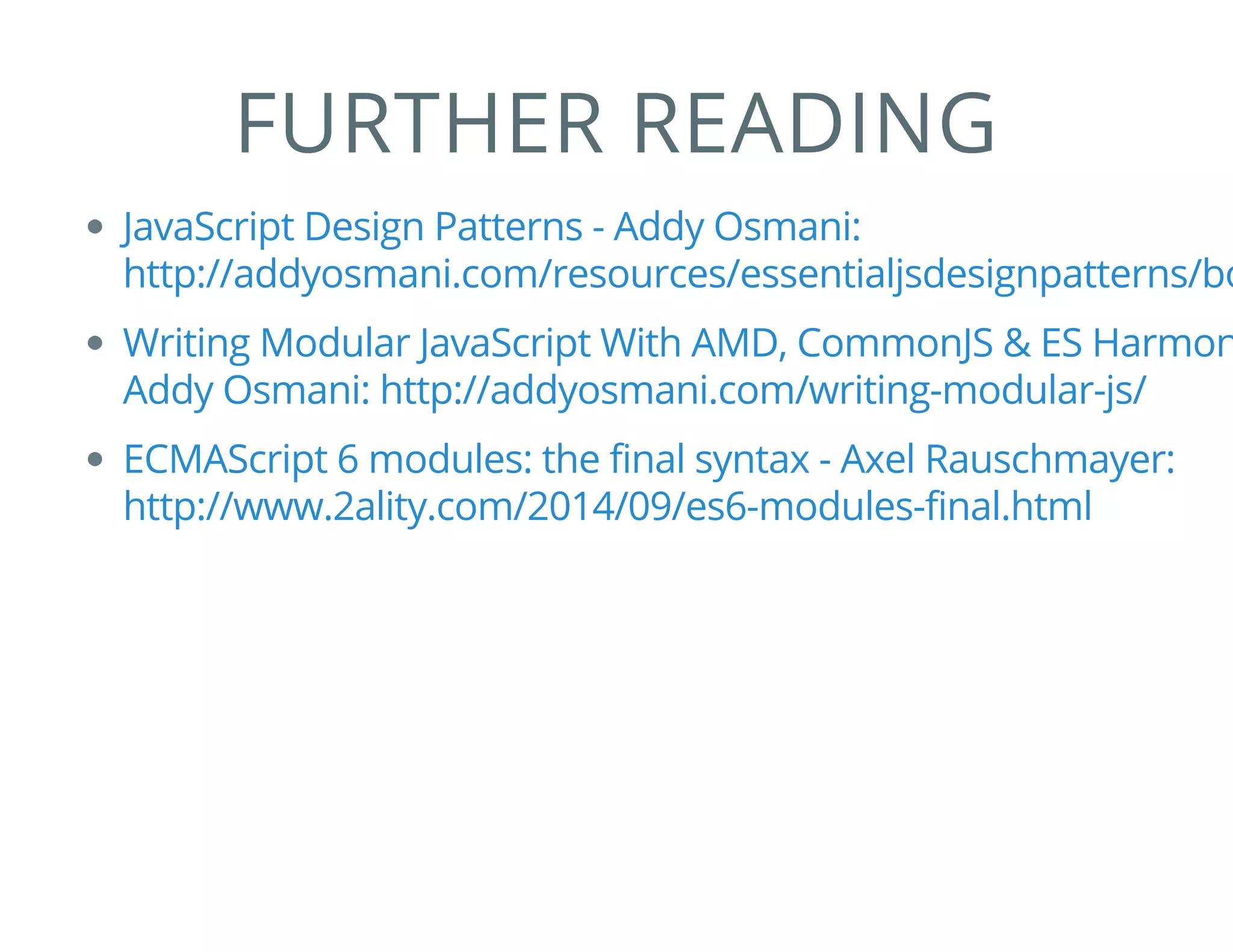This document discusses JavaScript module patterns, which help organize and limit the scope of code in projects. It covers different patterns for creating objects and modules, including using constructors, prototypes, the revealing module pattern, CommonJS, and AMD. The basic module pattern allows defining private and public members to encapsulate data and functions. Later patterns like CommonJS and AMD build on this to support asynchronous loading and use in different environments like the browser and Node.js.
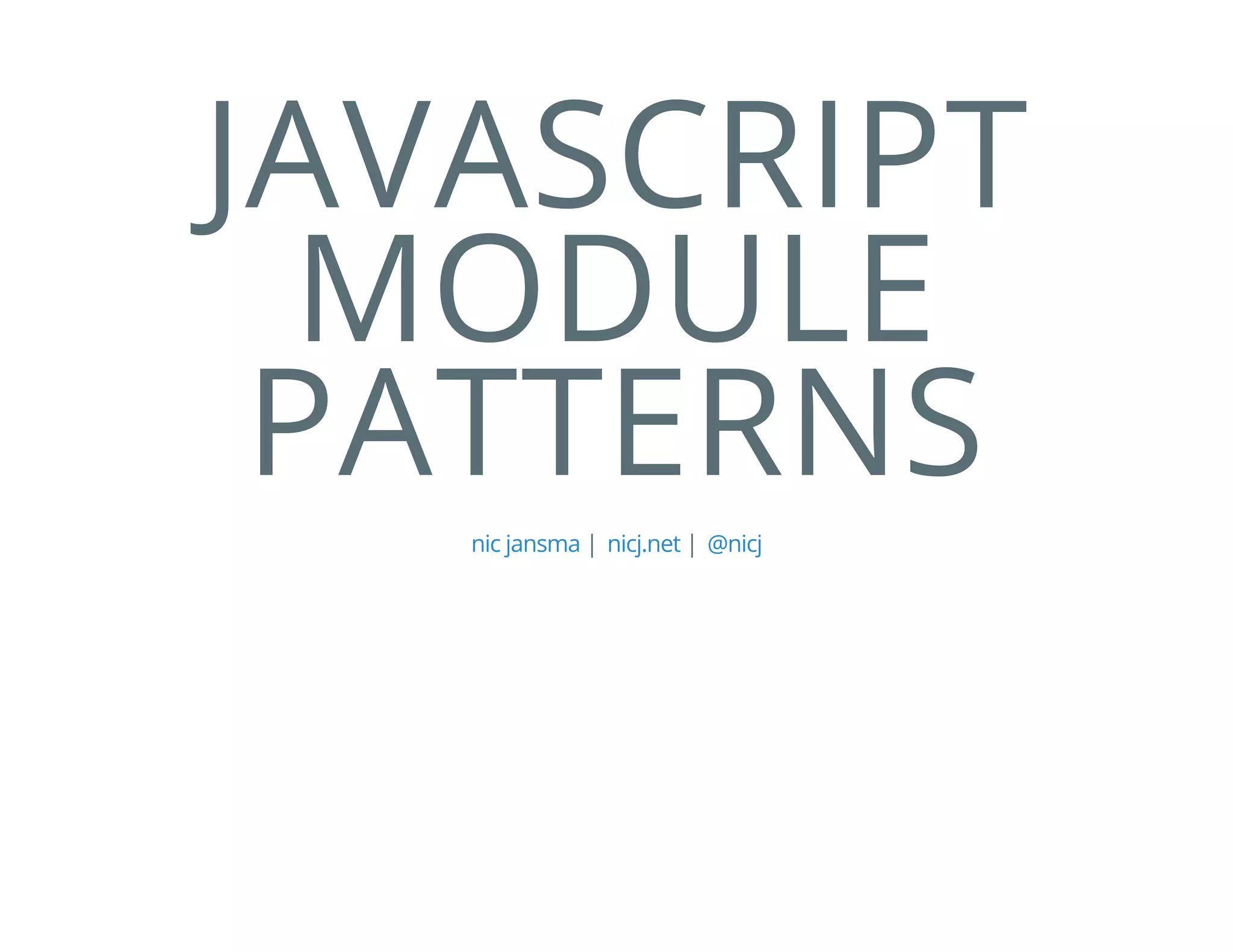
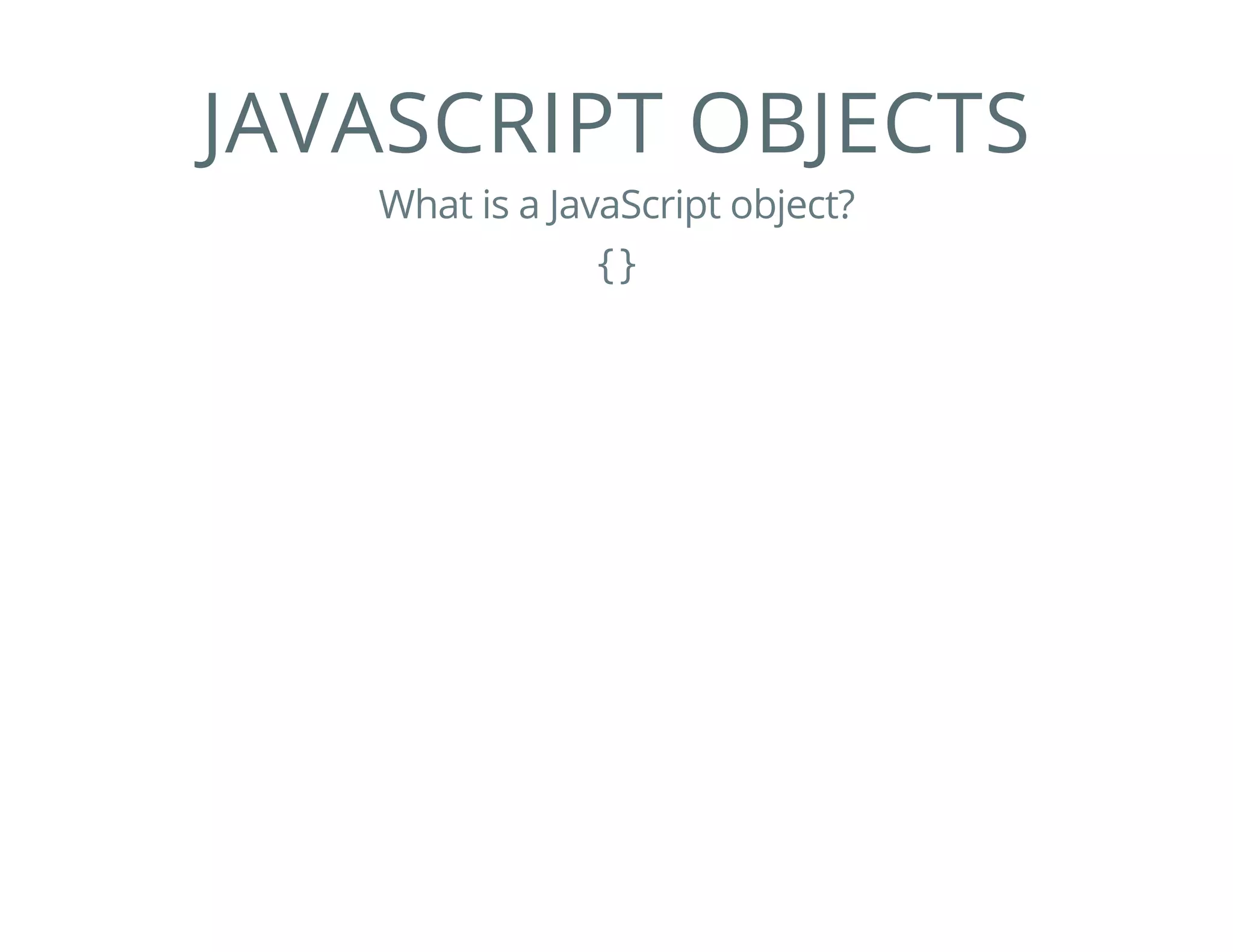
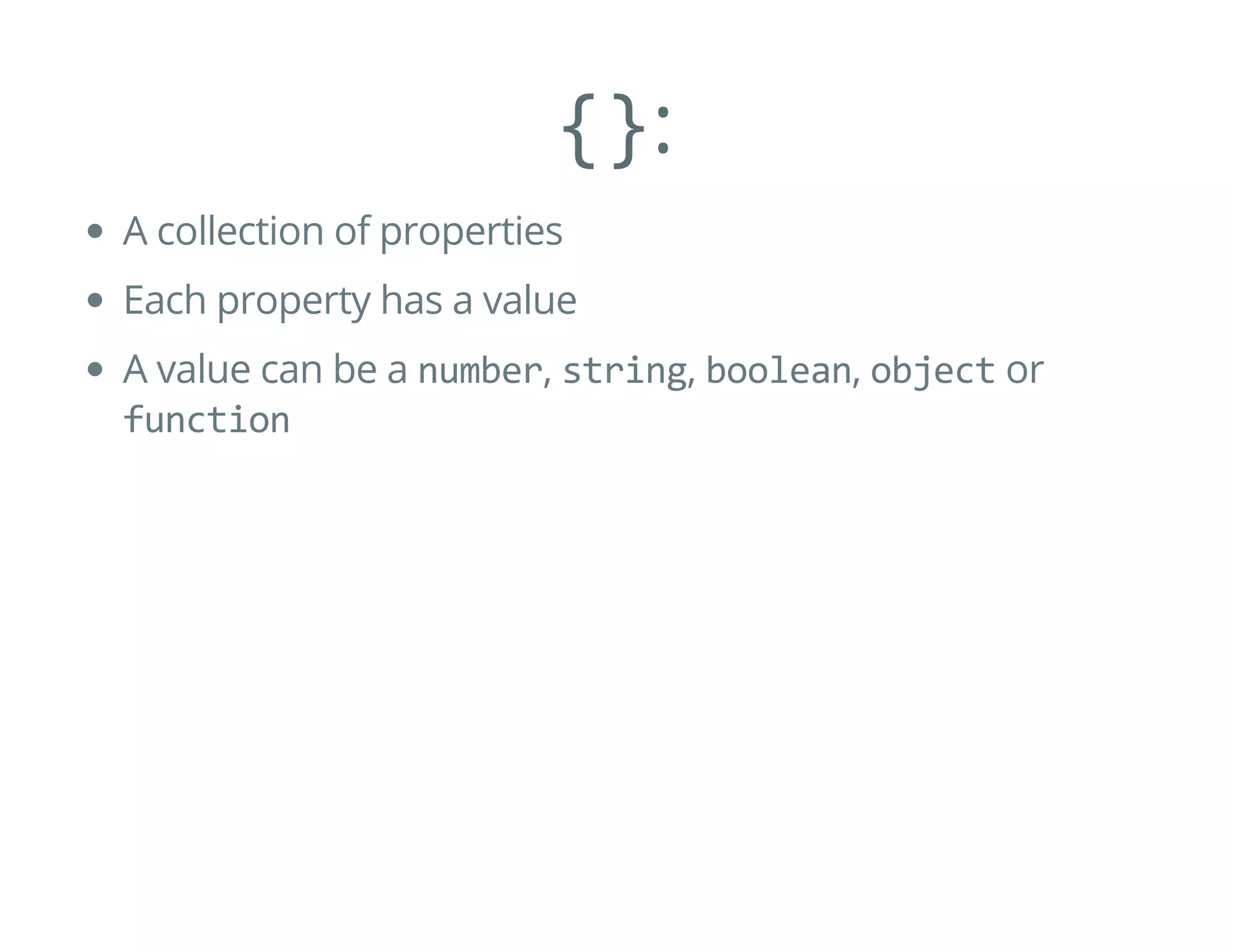
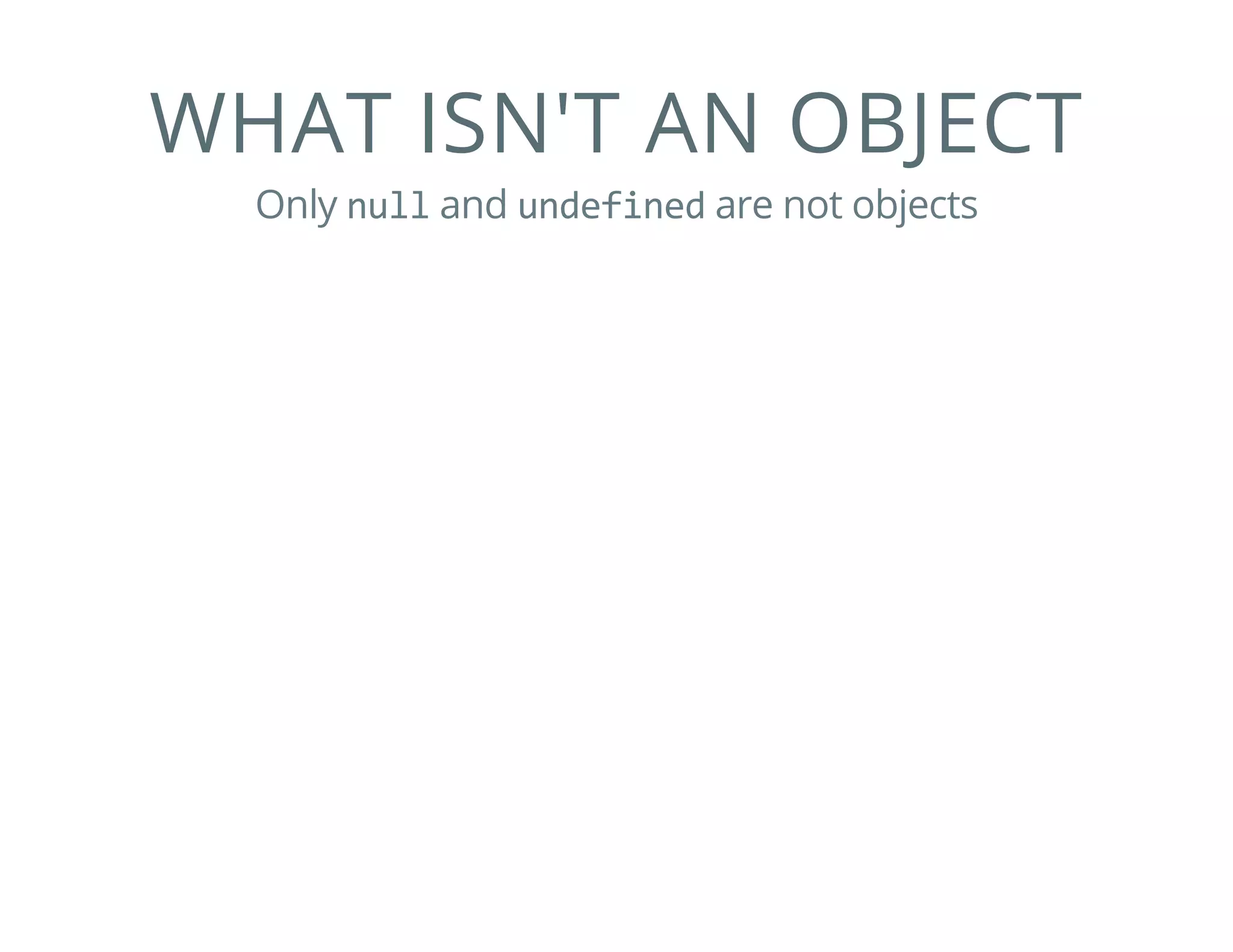
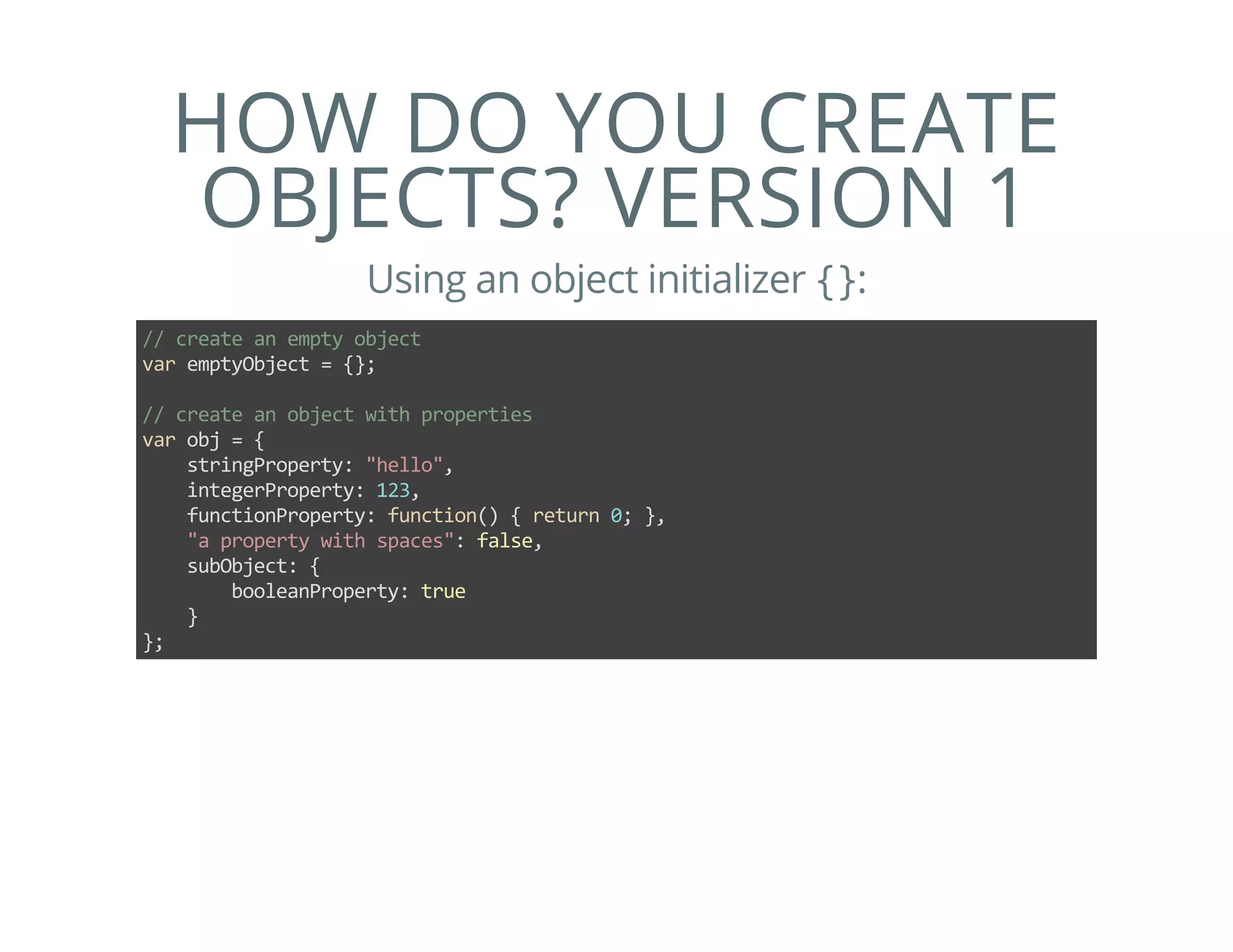
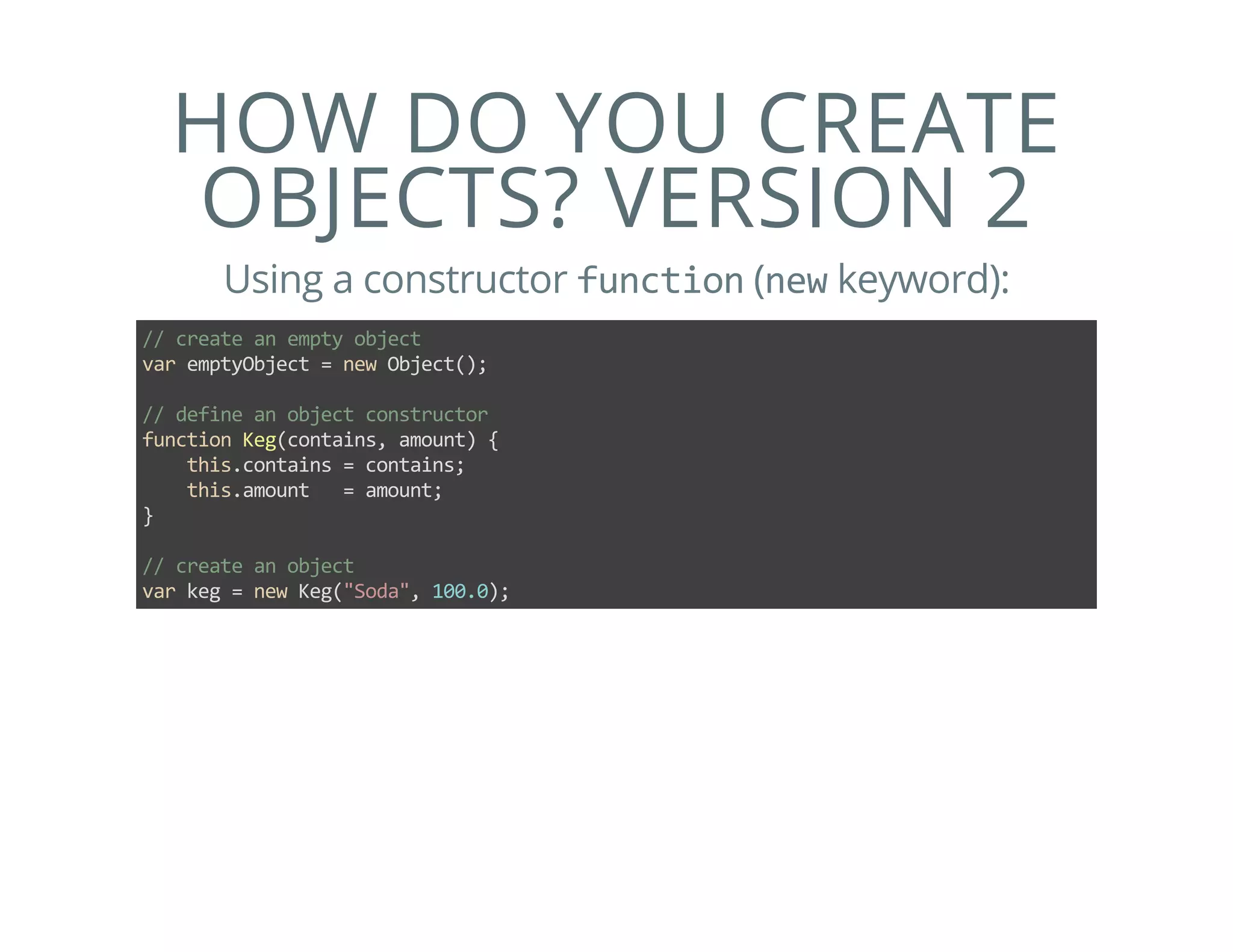
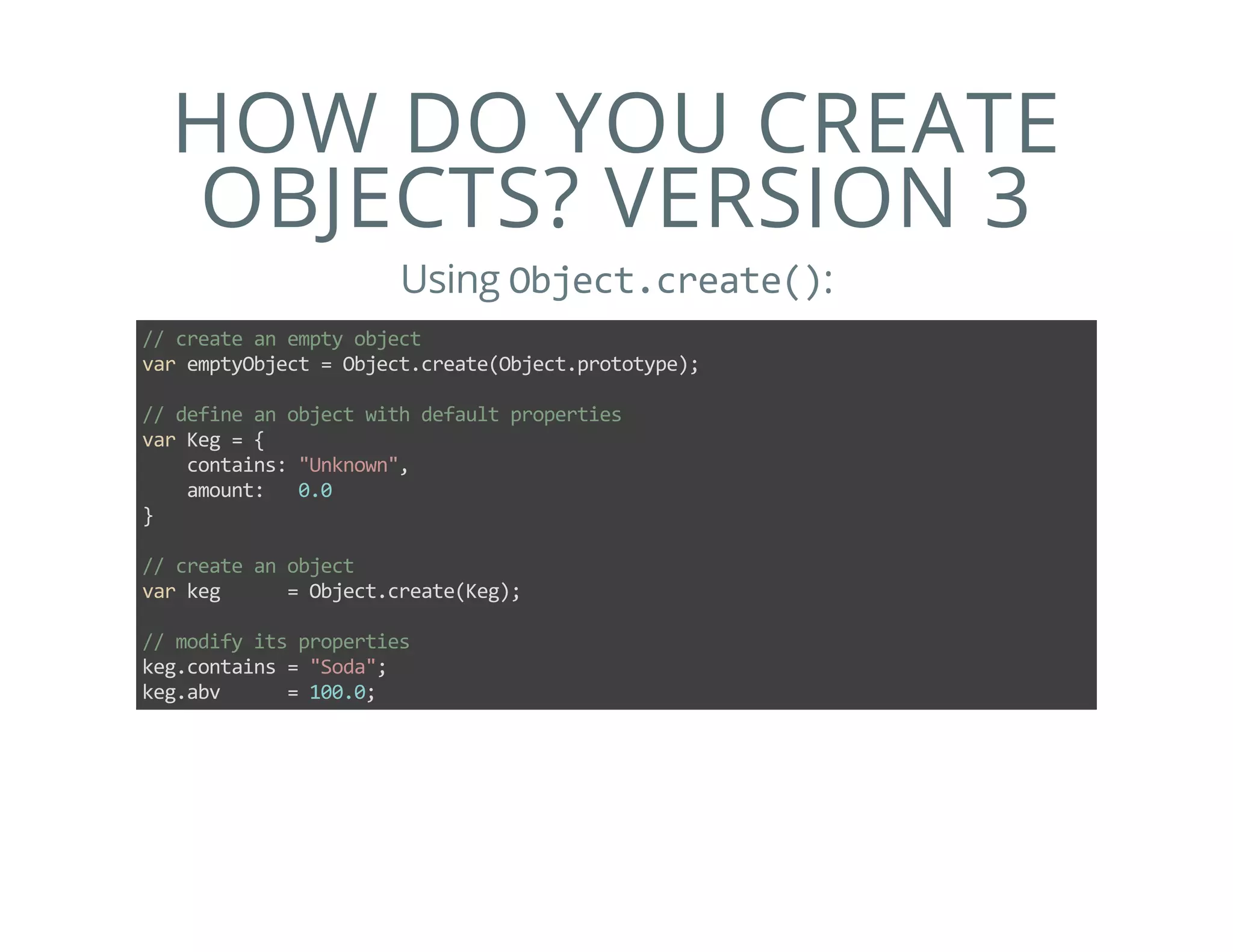
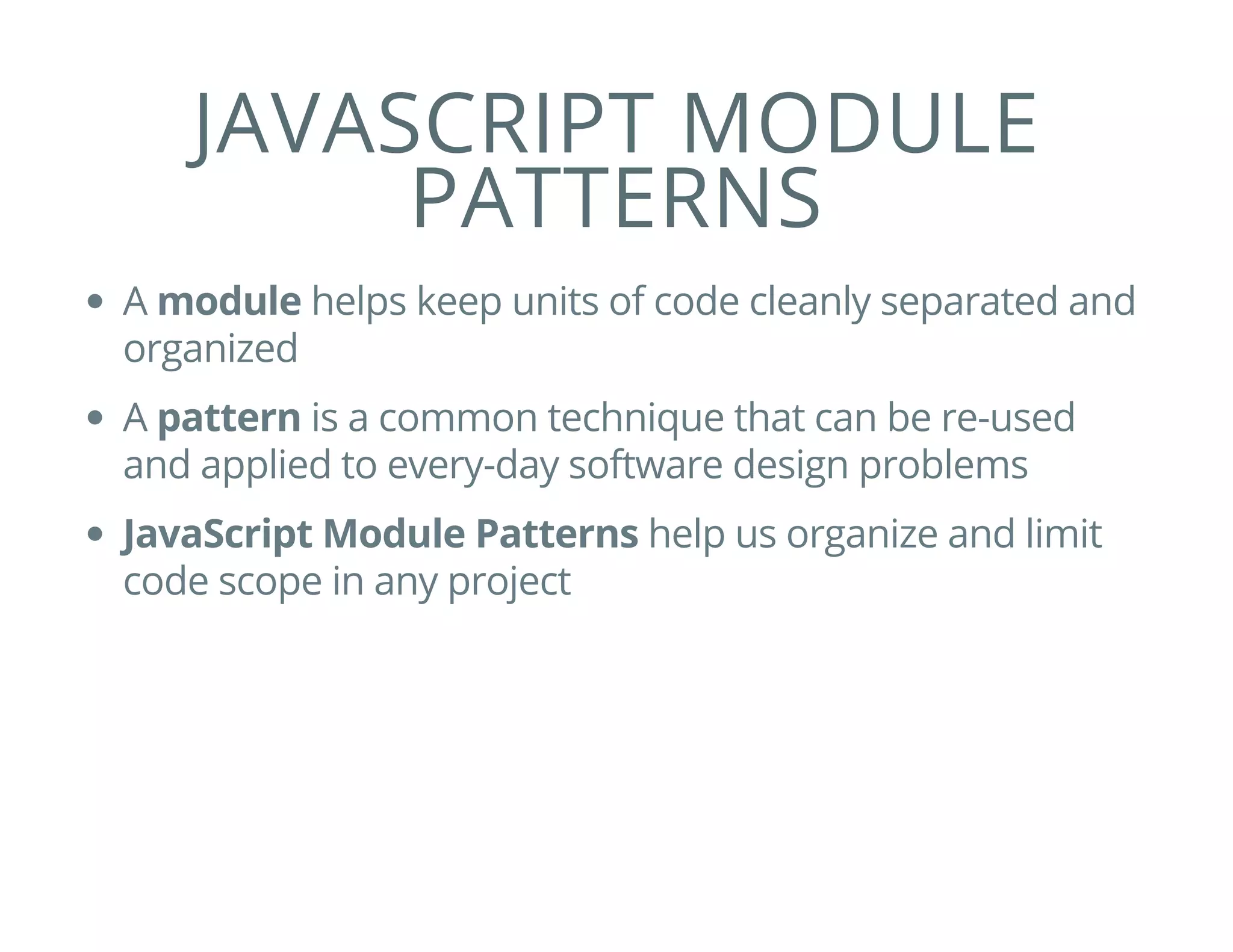
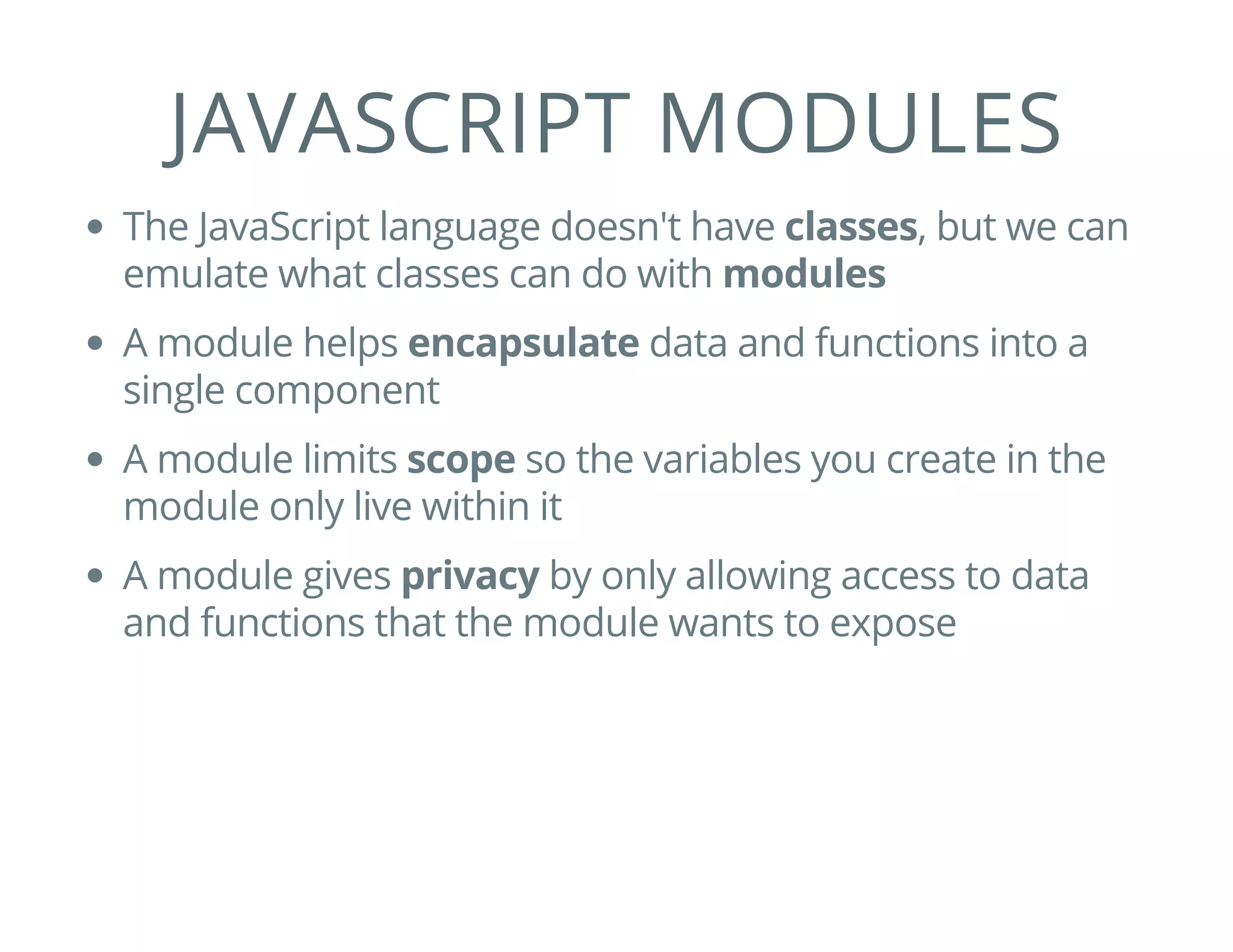
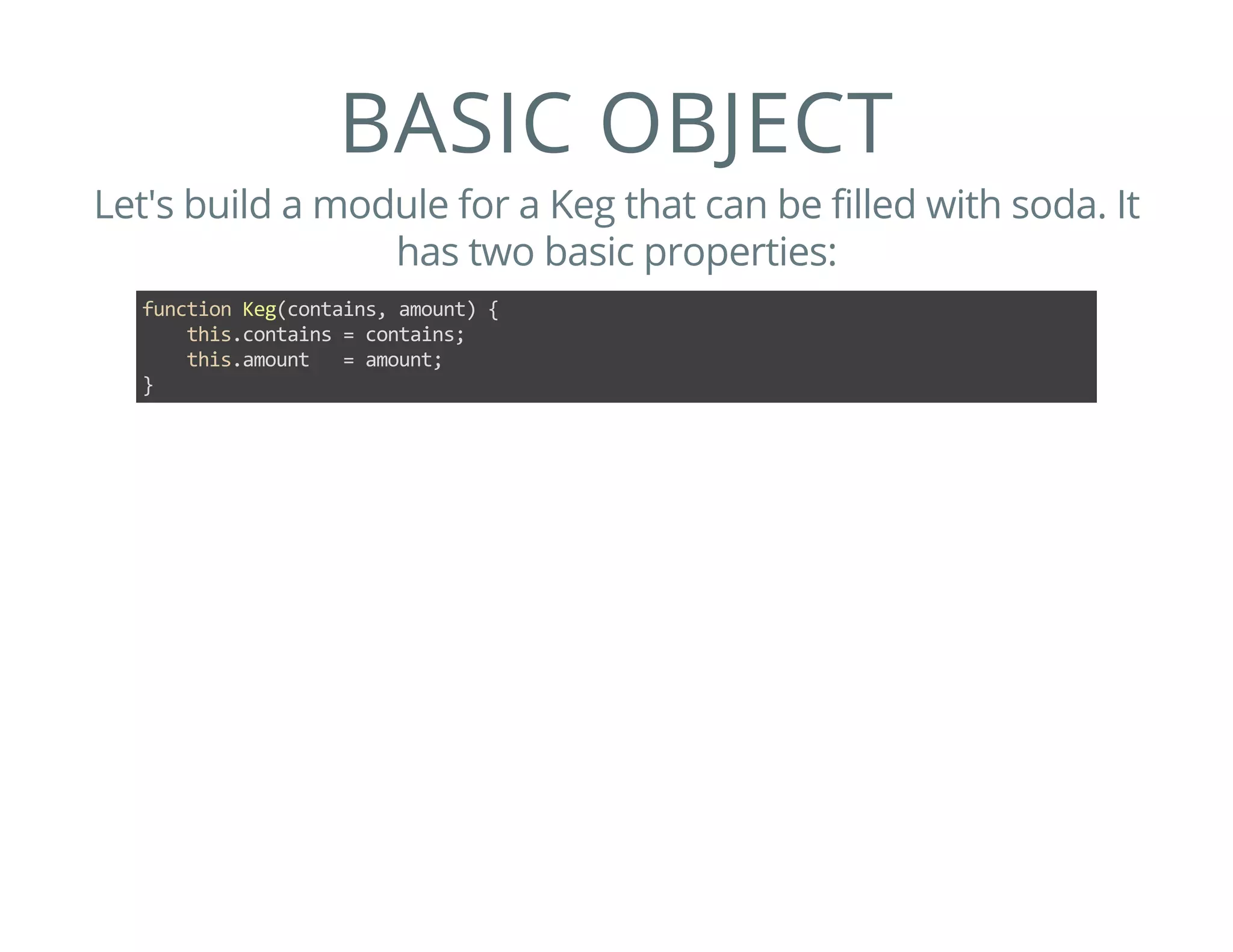
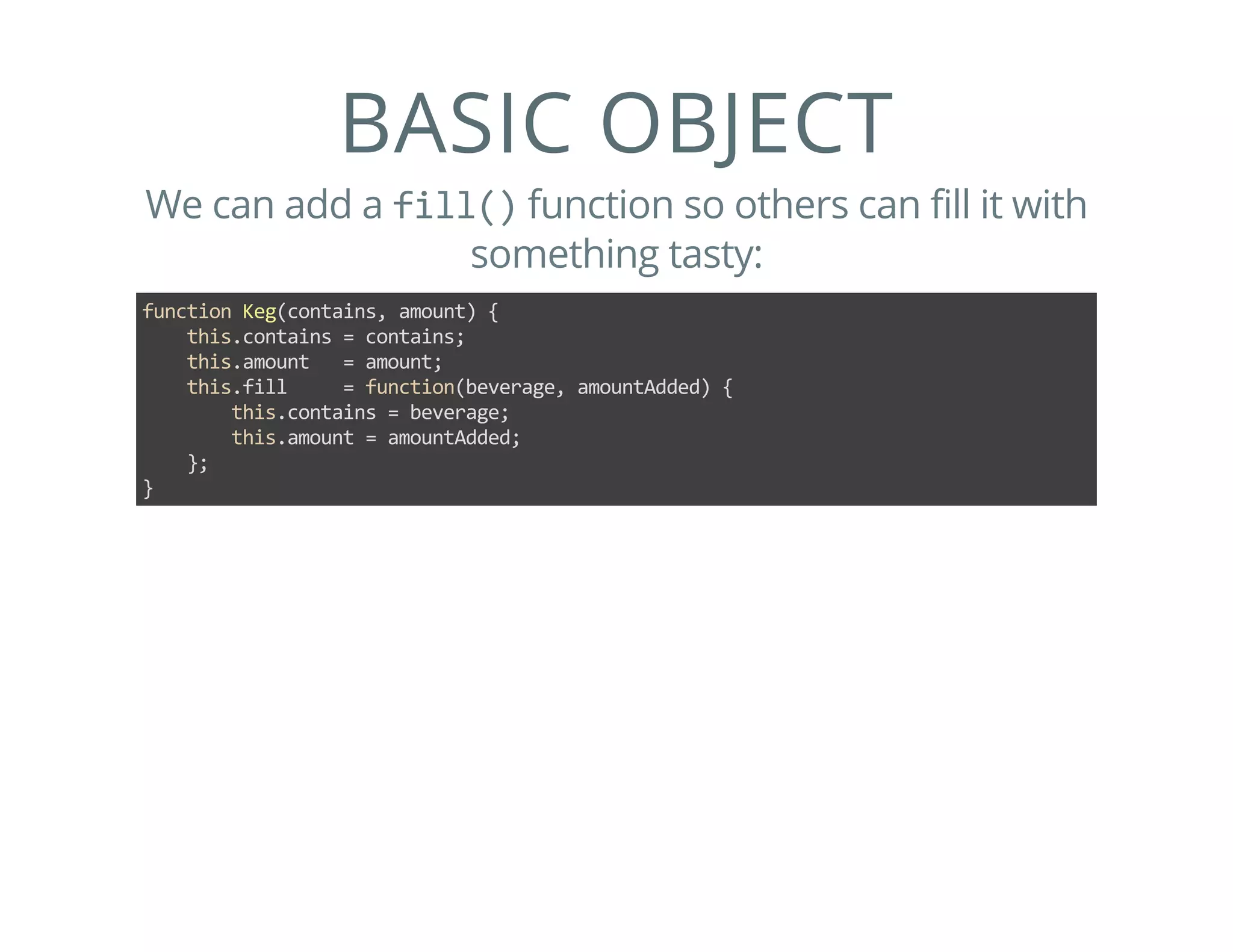
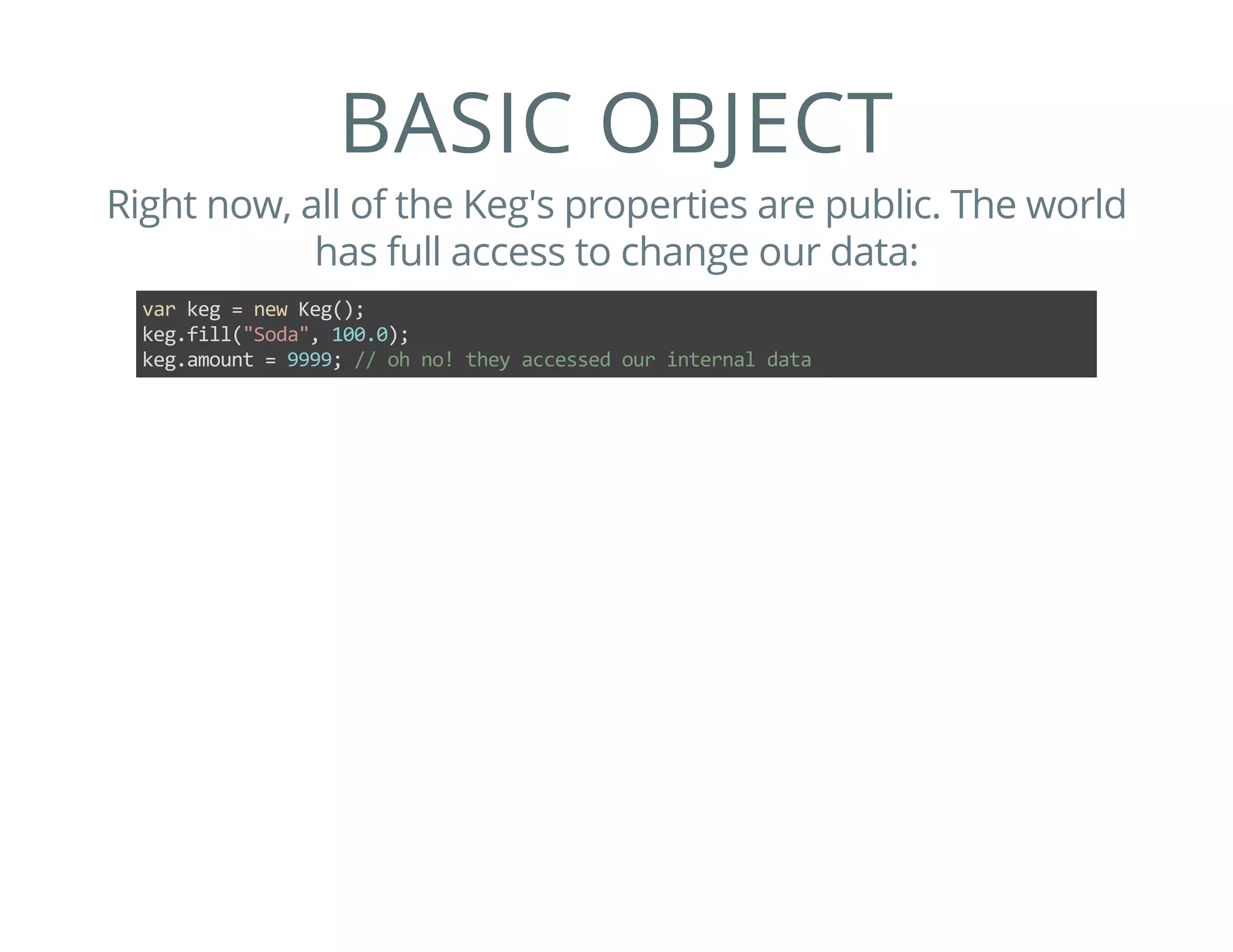


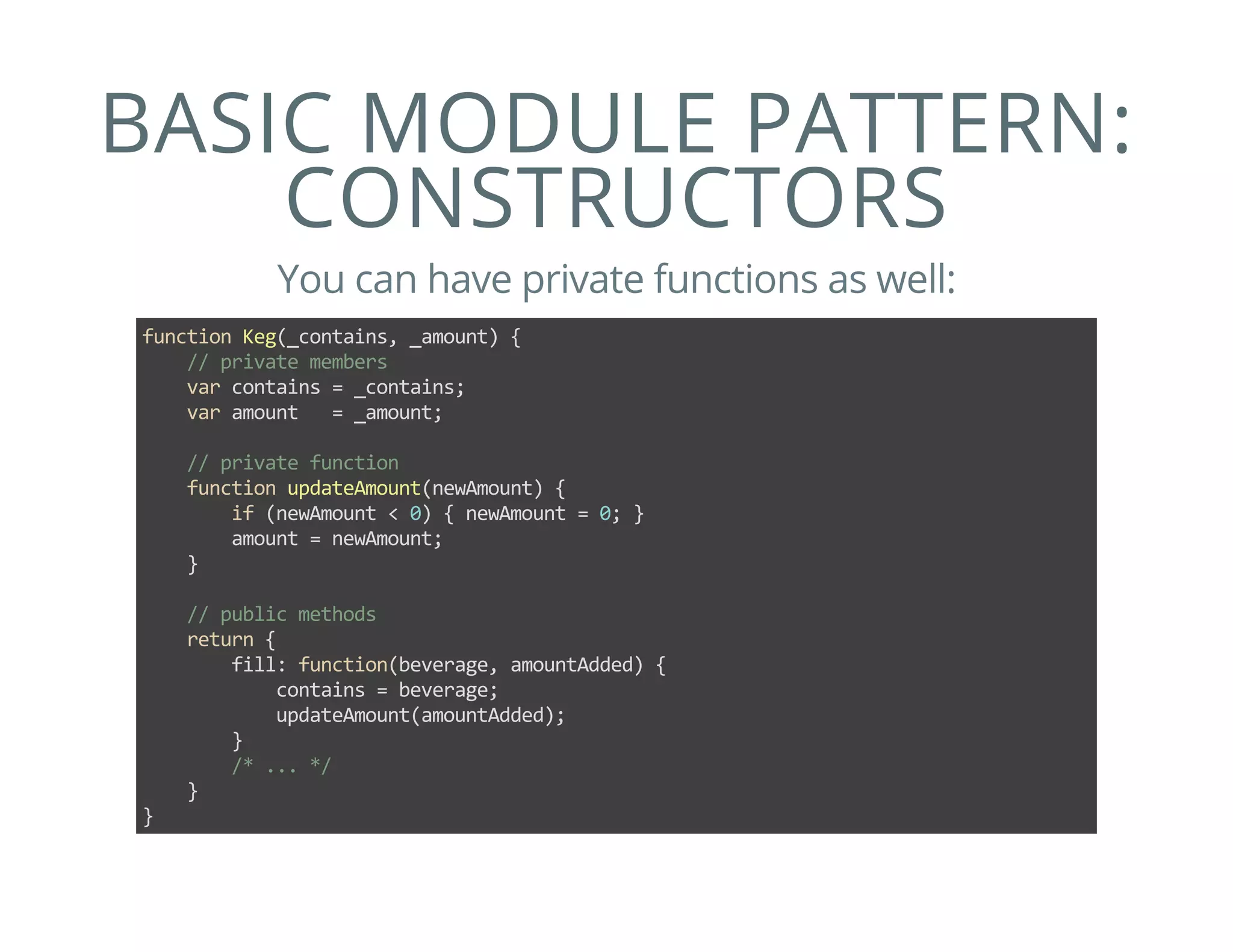
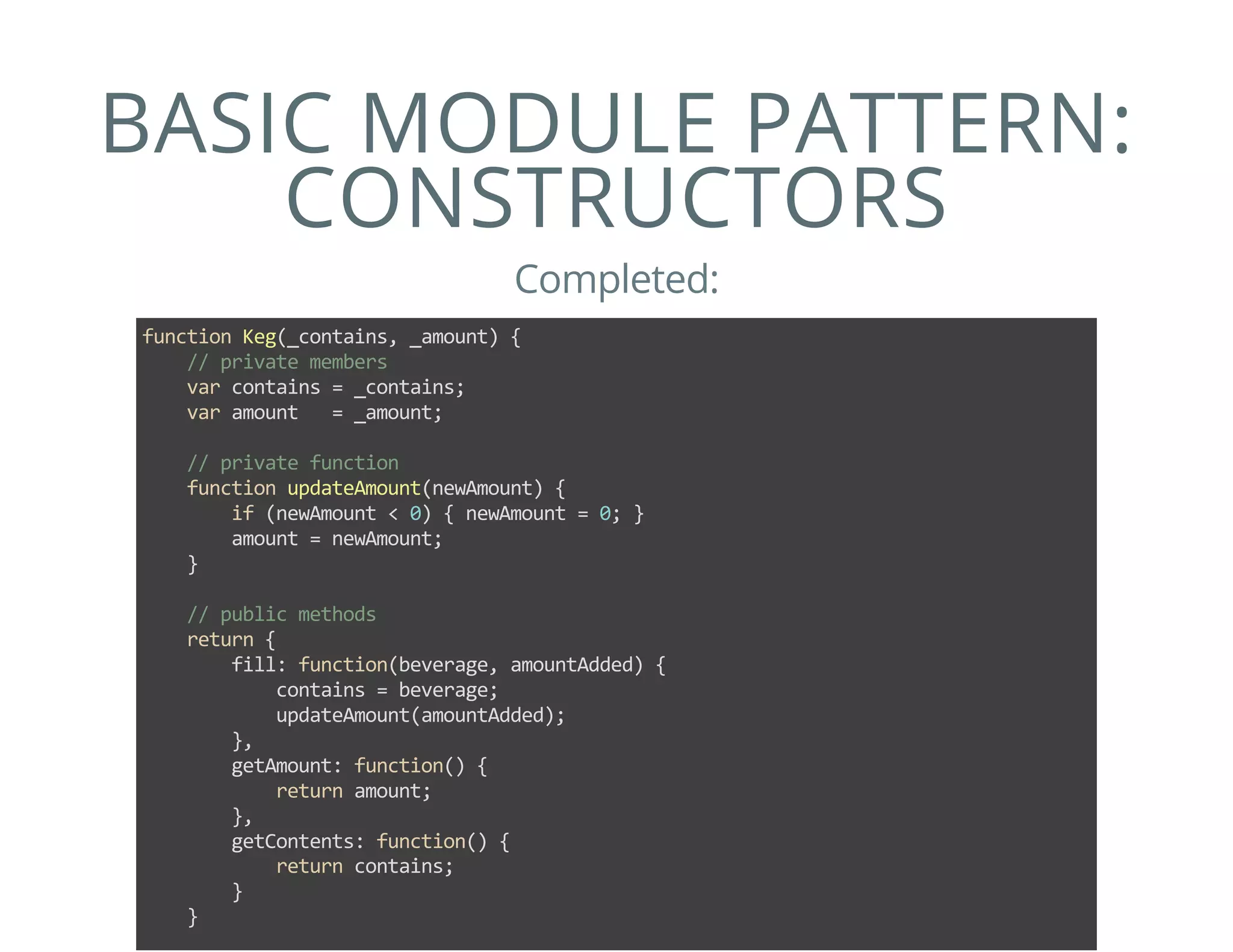
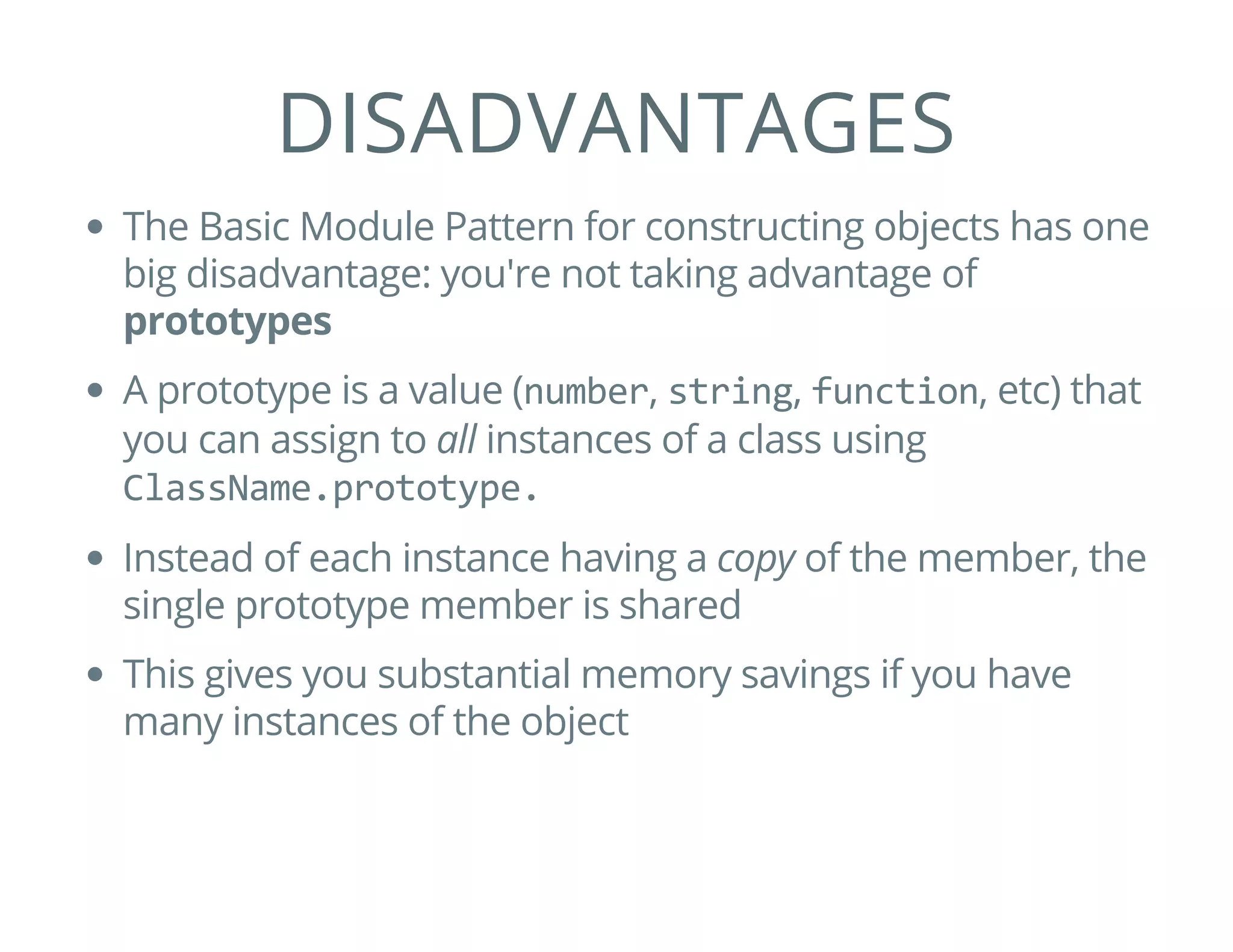
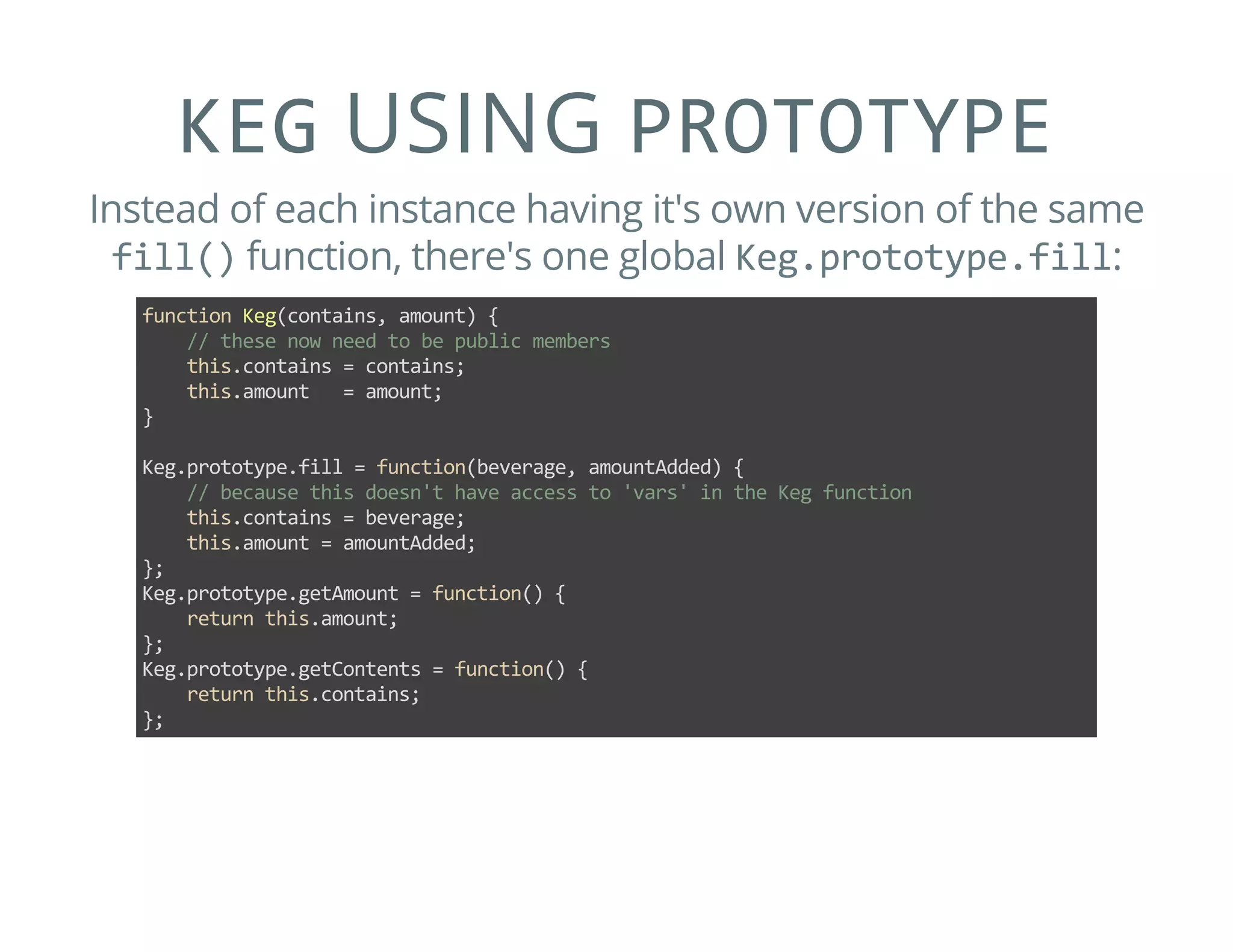
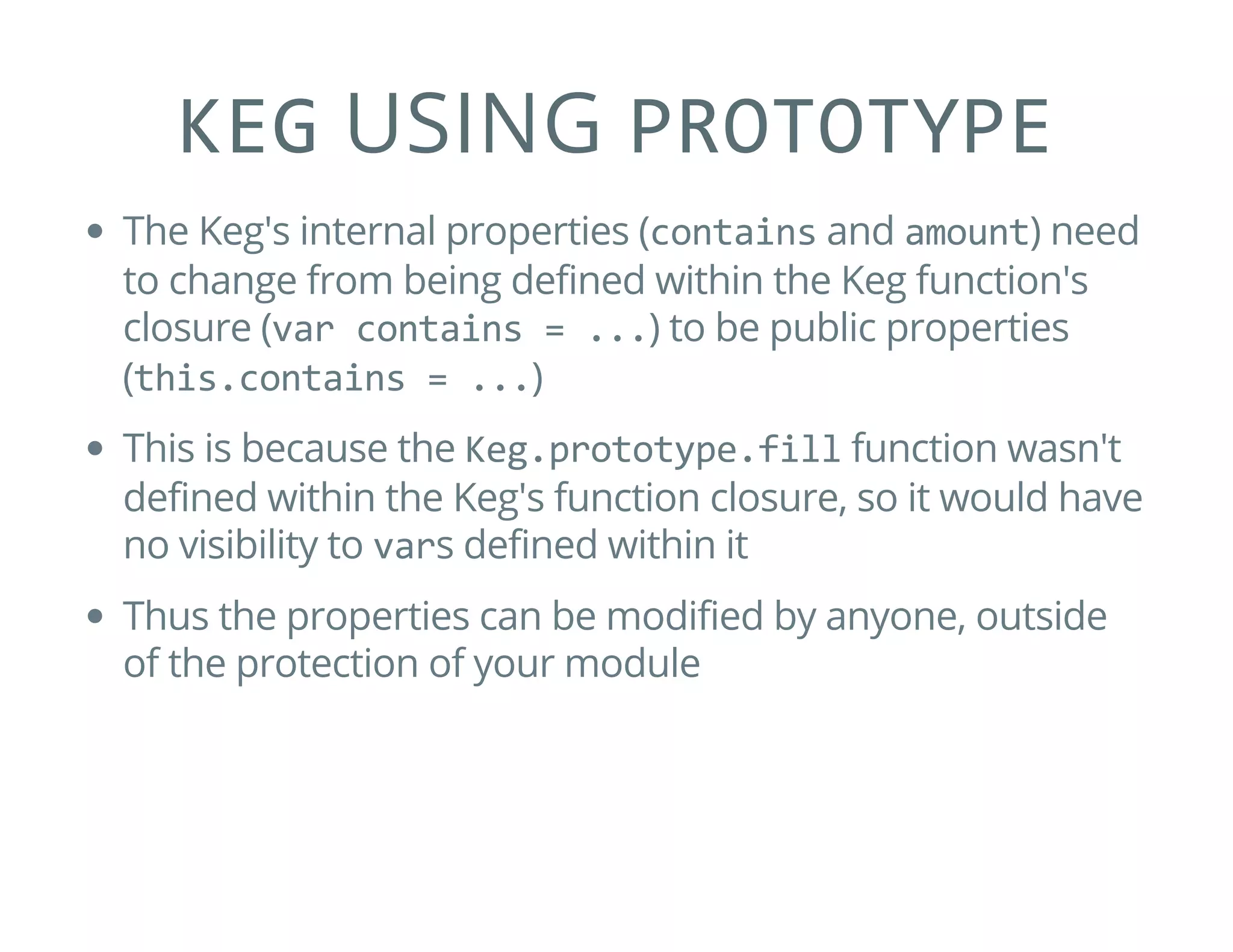
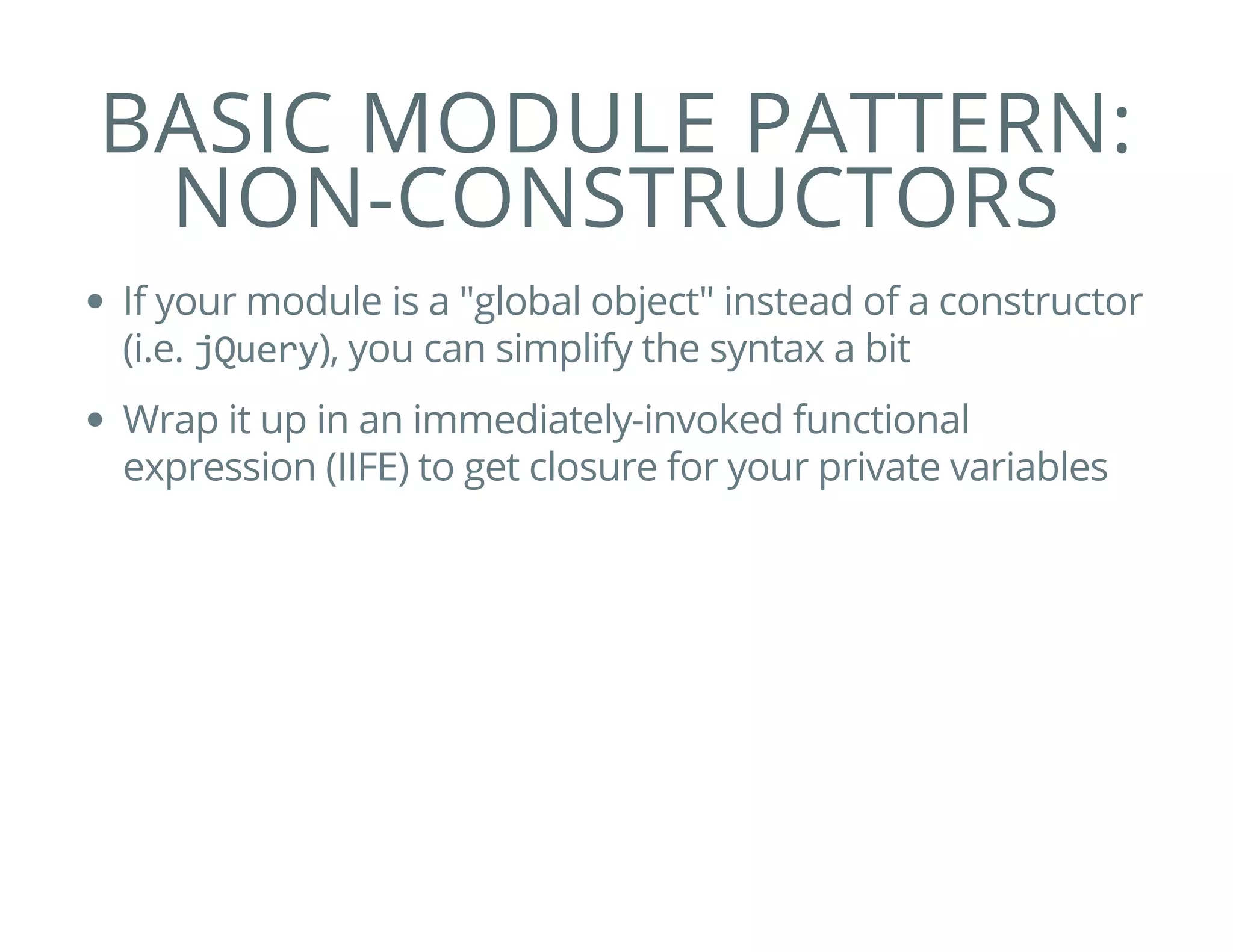
![BASIC MODULE PATTERN:
NON-CONSTRUCTORS
var KegManager = (function() {
var kegs = [];
// exports
return {
addKeg: function(keg) { kegs.push(keg); }
getKegs: function() { return kegs; }
}
})();
var sodaKeg = new Keg("Soda", 100.0);
KegManager.addKeg(sodaKeg);
var kegs = KegManager.getKegs(); // a list of Keg objects](https://image.slidesharecdn.com/javascript-module-patterns-150317211441-conversion-gate01/75/Javascript-Module-Patterns-21-2048.jpg)
![IMPORTS
If you want to "import" other global variables or other
modules, they can be passed in as IIFE arguments:
var KegManager = (function($) {
var kegs = [];
// do something with $
// exports
return {
addKeg: function(keg) { kegs.push(keg); }
getKegs: function() { return kegs; }
}
})(jQuery);
var sodaKeg = new Keg("Soda", 100.0);
KegManager.addKeg(sodaKeg);
var kegs = KegManager.getKegs(); // a list of Keg objects](https://image.slidesharecdn.com/javascript-module-patterns-150317211441-conversion-gate01/75/Javascript-Module-Patterns-22-2048.jpg)
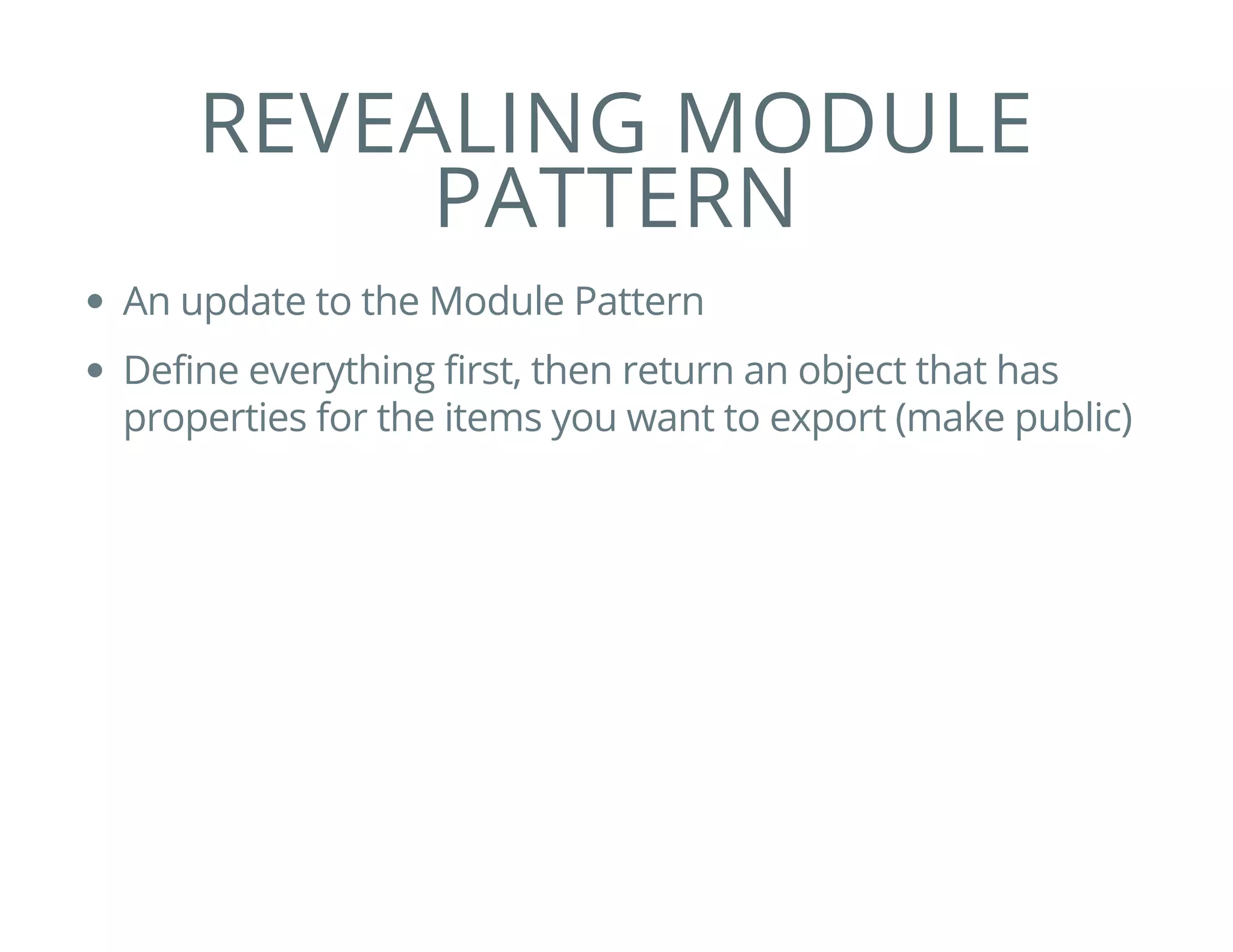
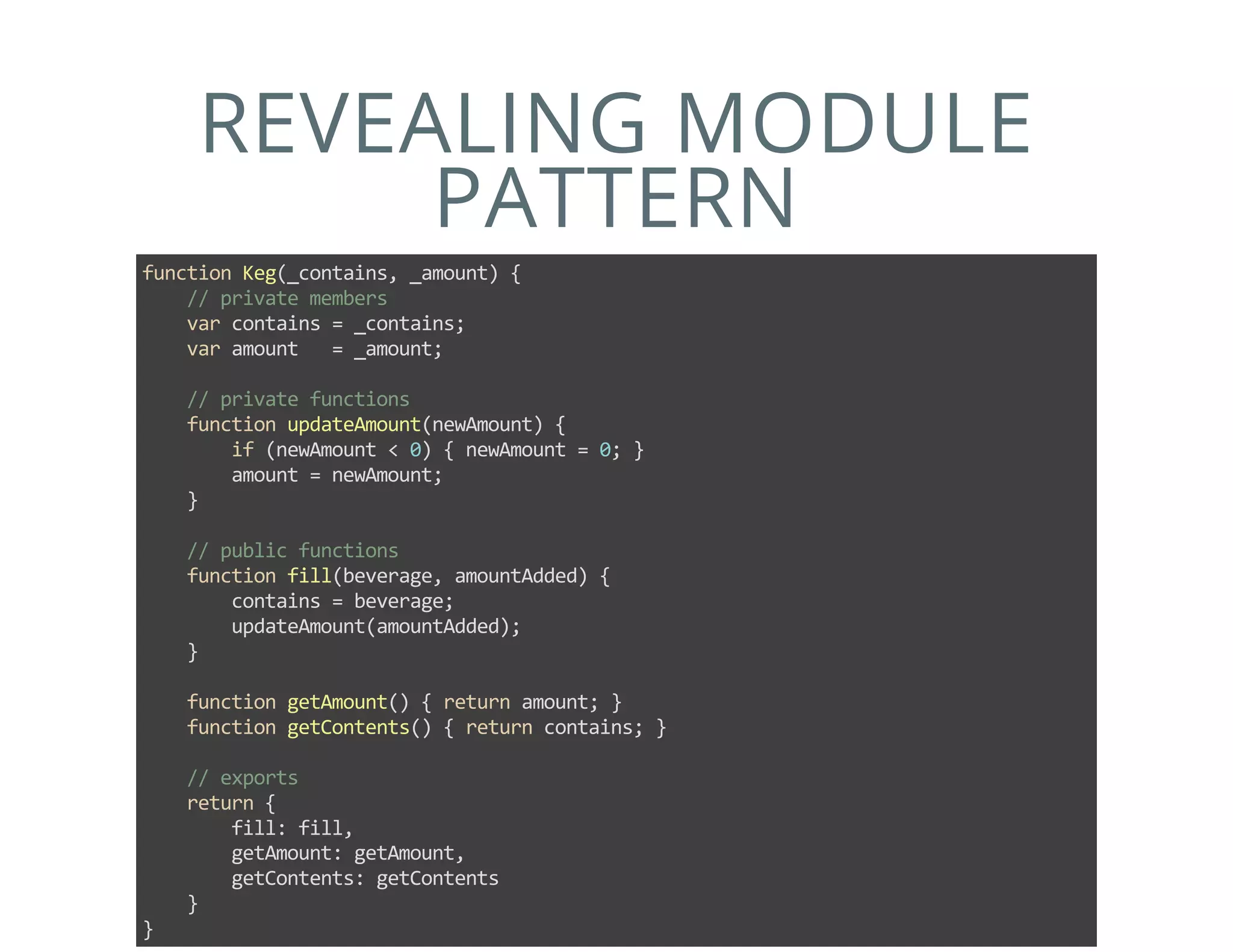
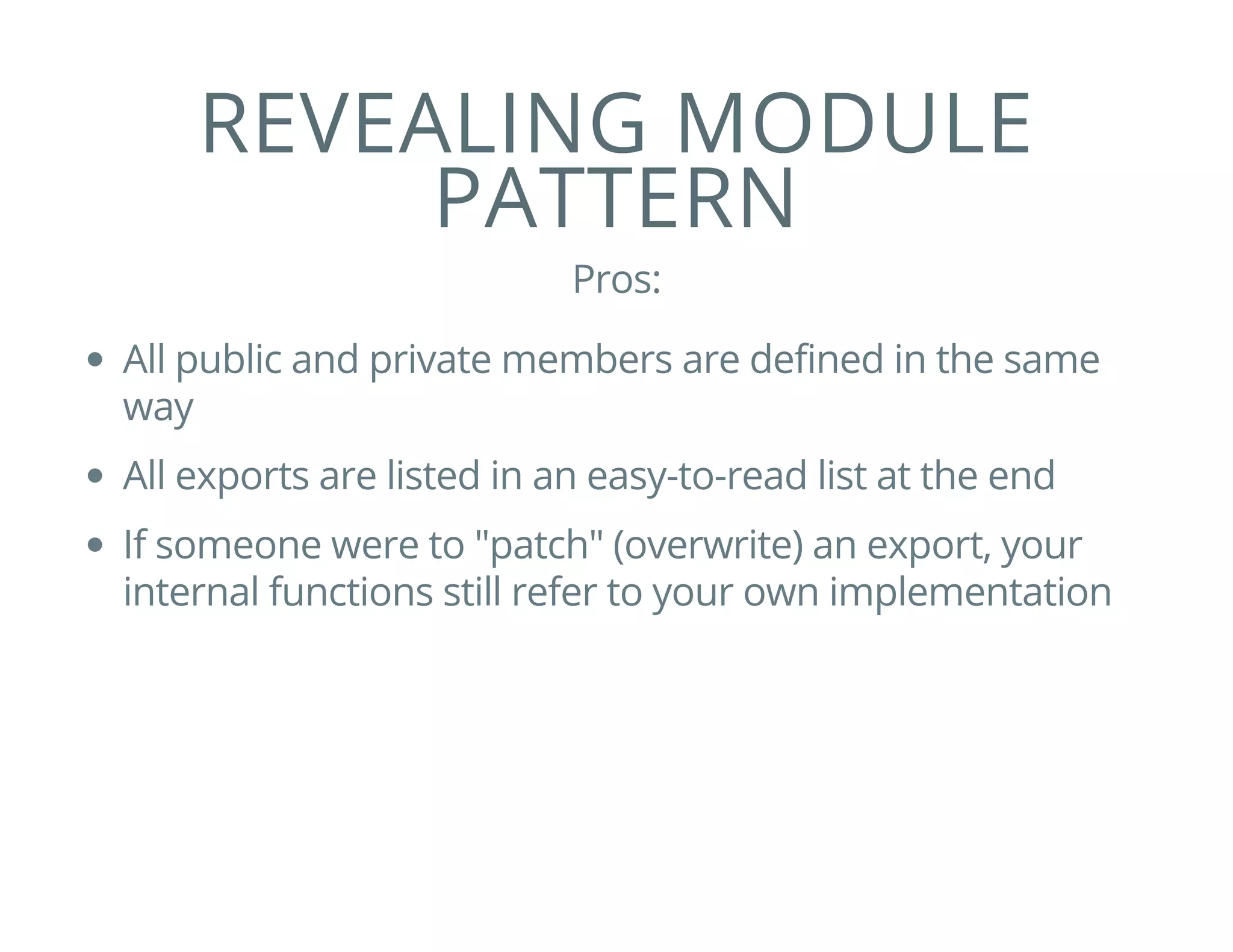
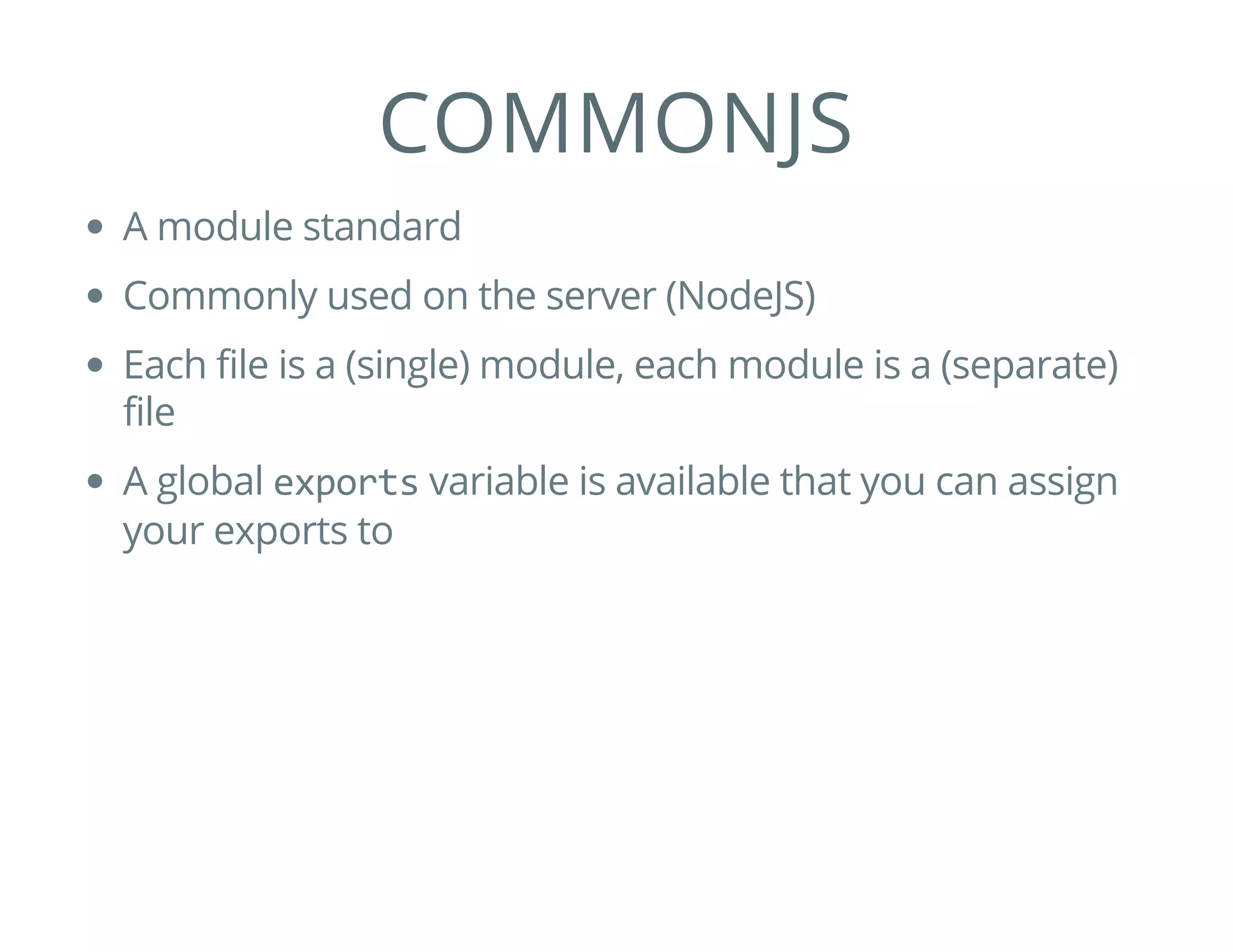
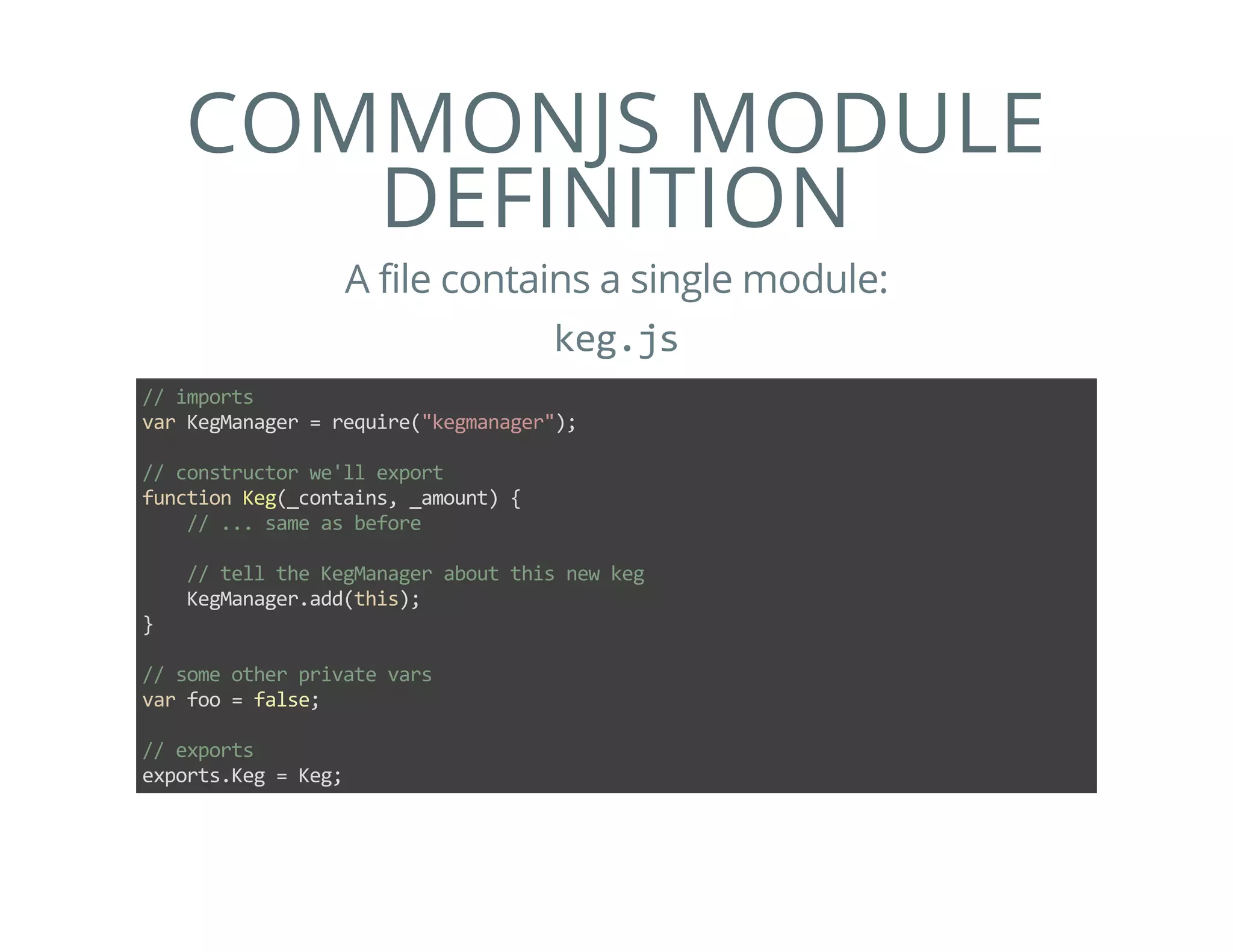
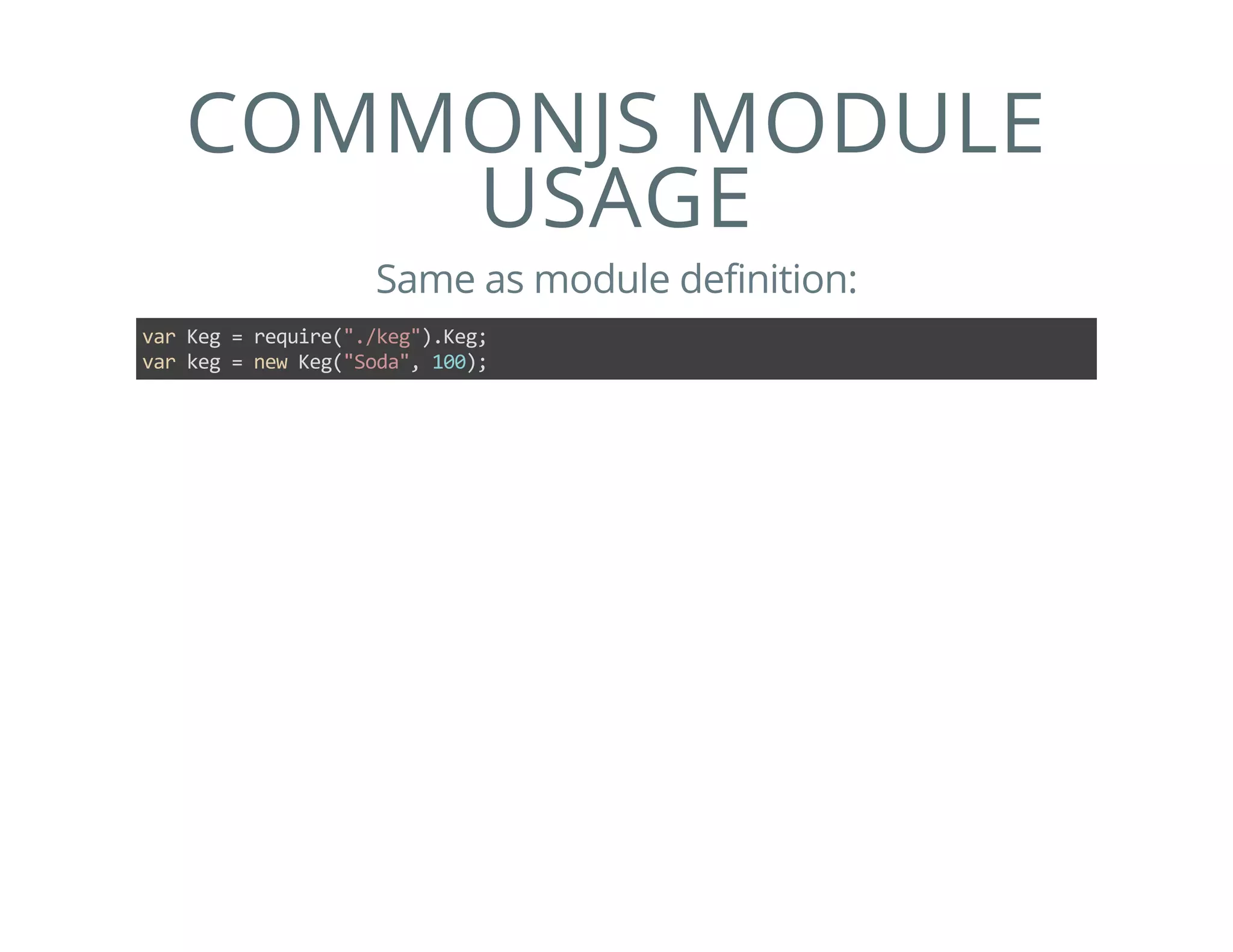

![AMD MODULE
DEFINITION: DEFINE
Defines a module, its dependencies, and the initialization
function that runs once all dependencies are loaded:
define(
"Keg", // module name, optional but suggested
["KegManager"], // list of dependencies
function(KegManager) { // initialization function
// constructor we'll export
function Keg(_contains, _amount) {
// ... same as before
// tell the KegManager about this new keg
KegManager.add(this);
}
// some other private vars
var foo = false;
// exports
return {
Keg: Keg
}
});](https://image.slidesharecdn.com/javascript-module-patterns-150317211441-conversion-gate01/75/Javascript-Module-Patterns-30-2048.jpg)
![AMD MODULE USAGE:
REQUIRE
Load the modules you need
require(
["Keg"],
function(Keg) {
// will only run once Keg (and its dependency, KegManager) is loaded
var keg = new Keg.Keg("Soda", 100);
});](https://image.slidesharecdn.com/javascript-module-patterns-150317211441-conversion-gate01/75/Javascript-Module-Patterns-31-2048.jpg)
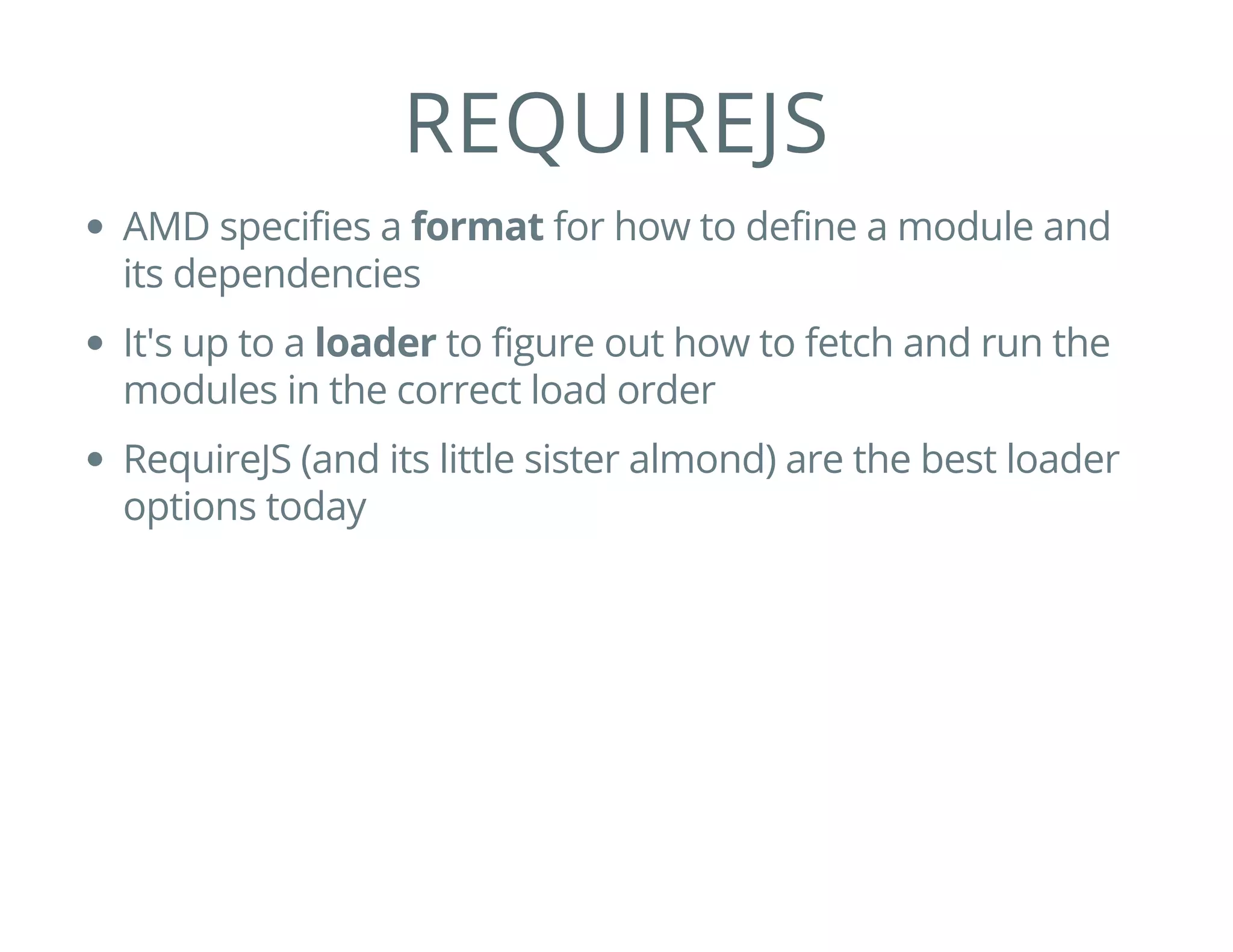
![REQUIREJS USAGE
<!DOCTYPE html>
<html>
<head>
<title>My Sample Project</title>
<!‐‐ data‐main attribute tells require.js to load
scripts/main.js after require.js loads. ‐‐>
<script data‐main="scripts/main" src="scripts/require.js"></script>
</head>
<body>
<h1>My Sample Project</h1>
</body>
</html>
scripts/main.js
require(['app/module1', 'app/module2']);](https://image.slidesharecdn.com/javascript-module-patterns-150317211441-conversion-gate01/75/Javascript-Module-Patterns-33-2048.jpg)



![UMD
Defines a module that works in Node, AMD and browser
globals
(function (root, factory) {
if (typeof define === 'function' && define.amd) {
// AMD. Register as an anonymous module.
define(['b'], factory);
} else if (typeof exports === 'object') {
// Node. Does not work with strict CommonJS, but
// only CommonJS‐like environments that support module.exports,
// like Node.
module.exports = factory(require('b'));
} else {
// Browser globals (root is window)
root.returnExports = factory(root.b);
}
}(this, function (b) {
//use b in some fashion.
// Just return a value to define the module export.
// This example returns an object, but the module
// can return a function as the exported value.
return {};
}));
https://github.com/umdjs/umd/blob/master/returnExports.js](https://image.slidesharecdn.com/javascript-module-patterns-150317211441-conversion-gate01/75/Javascript-Module-Patterns-37-2048.jpg)

